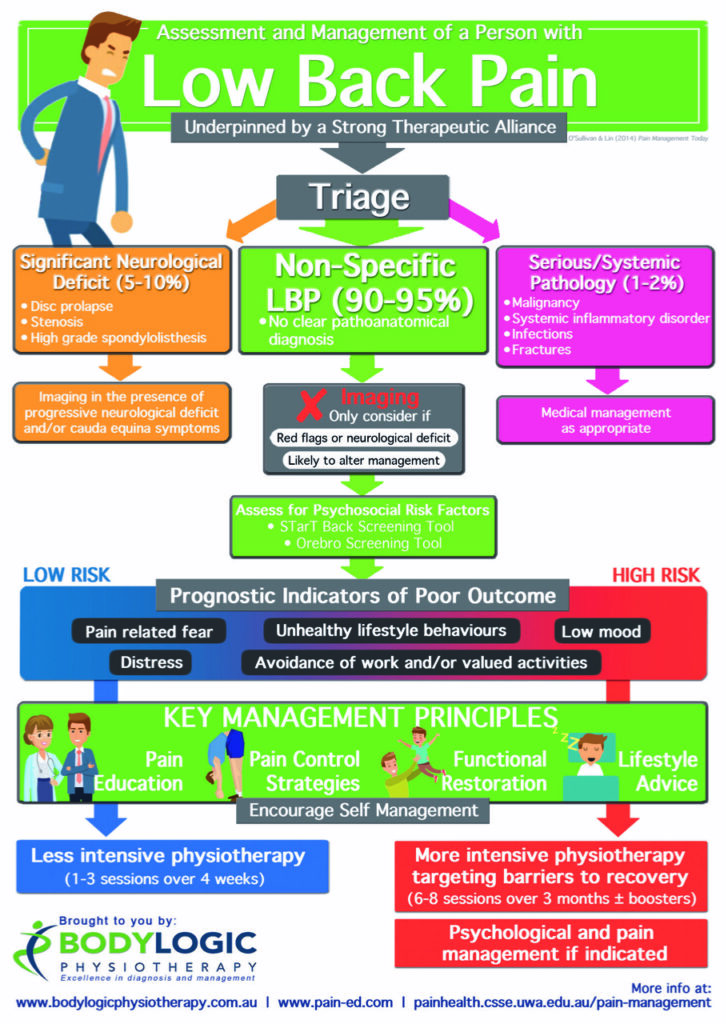Getting back pain assessed and managed
There are a variety of things that cause back pain and the majority of them are non-dangerous. Here’s some tips on assessing low back pain and helping your patient learn how to manage it.

The triage of back pain
There are three primary causes for back pain. These are:
- Significant neurological deficit (5-10% of people). This pain is as a result of disc prolapse, stenosis, or high-grade spondylolisthesis.
- Non-specific low back pain (90-95% of people). This pain has no clear pathoanatomical cause or diagnosis.
- Serious/system pathology (1-2% of people). This low back pain is caused by malignancy, systemic inflammatory disorder, infections or fractures.
How should each be managed?
If a person is experiencing significant neurological deficit, they should seek imaging in the presence of progressive neurological deficit and/or cauda equina symptoms.
If the low back pain is non-specific, you should only consider imaging if they are experiencing red flags or neurological deficit and it is likely to alter how the back pain is managed. You should assess for psychosocial risk factors through the STarT Back Screening Tool and the Orebro Screening Tool.
If they are experiencing serious/systemic pathology, you should advise medical management as appropriate.
What can cause low back pain?
Low risk to high risk indicators of poor outcome – in order of low to high – in back pain prognosis include:
- Pain-related fear
- Distress
- Unhealthy lifestyle behaviours
- Avoidance of work and/or valued activities
- Low mood
Key ways to manage your back pain
Some things that could help you better understand and manage your patient’s back pain include:
- Pain education – less intensive physiotherapy (1-3 sessions over 4 weeks)
- Pain control strategies
- Function restoration
- Lifestyle advice – more intensive physiotherapy targeting barriers to recovery (6-8 sessions over 3 months + boosters) and psychological and pain management if indicated
Struggling with back pain in Perth and need further guidance? Get in touch with our expert physiotherapists at Body Logic.
we offer a range of services
we offer a range of services
Find the service you need below
WHO WE WORK WITH








Additional Resources
What do you need to know about overall joint health? https://bodylogic.physio/resources/understanding-pain/what-should-you-know-about-joint-health/

